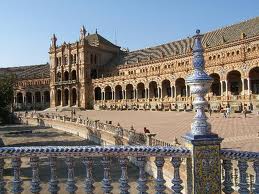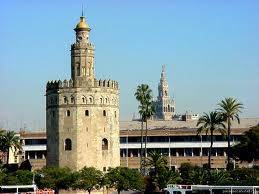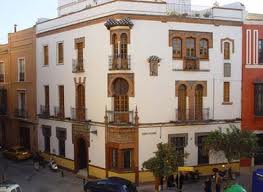Museums in Sevilla

Sevilla has long been the most romantic city in Spain. Set along the banks of the Guadalquivir, one of the most important and emblematic rivers in Spain, the city effortlessly combines every single one of the cliches linked to the country and the culture of the peninsula, creating an almost mystical sense of folklore that permeates through the simplest of expressions. From flamenco to the whitewashed facades of the houses bathed in the light of the ever-shining sun, Sevilla is simply staggering.
Inhabited since more than 2,000 years, Sevilla was originally one of the settlements of the Tartessos, the very first civilization to develop in present Spain. Known at the time as Spal, the city was colonized peacefully by the Phoenicians, who controlled the trade of the entire area comprised between modern day Cadiz, Córdoba, Málaga and Almería. But following the decline of the Phoenician civilization, Spal was invaded by Carthaginian forces which are thought to have destroyed all or most of the structure of the ancient Tartessian settlement.
Little remained of Spal, except for its name, which lasted through Carthaginian rule and even outlived it, after the Carthaginians were comprehensively kicked out of every port and city in the Mediterranean Sea by the Romans in the three Punic Wars. Spal was then Latinised into Hispalis, and the roots of the modern city were laid, both in terms of its final name and in relation to its infrastructure. Hispalis became a considerable settlement, closely linked to nearby residential areas which have been much better preserved, such as the famous archeological findings of Italica and Carmona.

From that point forward, the history of Sevilla is very much a close mapping of the history of the rest of Spain: under Roman rule the city flourished and eventually turned into a Christian bastion before it was successively invaded by a series of barbarian tribes – the Vandals, first, the Suebi, later, and, ultimately, the Visigoths, who kept control of the peninsula until the Moorish invasion of 711 AD. Sevilla was ruled for over 500 years by the Muslim dynasties, becoming the capital of several kingdoms and occupying a central position in the cultural life of the Caliphate.
Much of the remains of the ancient civilizations that inhabited modern day Sevilla can be seen in the impressive Archeological Museum of the city, which houses, among others, the so-called Treasure of Carambolo. Named after the hill in which it was found, the treasure includes some of the most important pieces of pre-Roman times available to us, even though these days it is widely accepted that the bulk of the pieces are of Phoenician origin, rather than the older Tartessian. Be that as it may, should you ever spend some time, be it on a short holiday or a longer stay in Sevilla, you should take the opportunity to visit this museum and take a look at the collection.
Nevertheless, any Sevilla city guide will tell you that the most visible influence and the greatest legacy left upon the city of Sevilla comes from its Moorish period and the subsequent conflict between Muslims and Christians to keep control of the place. Still today, the walls around the city, originally erected by Julius Caesar but heavily adapted by the Almohads during the XI century to work as fortification against potential attacks by the Christian army, remain a geographical landmark. Similarly, other Muslim monuments, such as the Torre del Oro (Gold Tower) and the old Alcázar, a one-time fort since used as royal palace, are forced stops in the itinerary of visitors all year long.

The Golden Age of Sevilla came during the XV century, during the Age of Discovery, when the city became the primary port of connection between Spain and its colonies on the other side of the world. A stroll along the centre of town constitutes the equivalent of walking through a living museum, which richly exhibits the lavish tastes and seemingly endless resources that shaped the life and look of the city in the XVI century. The cathedral, the second largest Christian monument after St Peter's in Rome, is a good example of the architecture developed during the time, with strong Gothic influences taken to the limit and Moorish materials and styles decorating the whole.
A good example of the incursion of Renaissance tendencies into the daily life of Sevilla is the beautiful palace known as Pilate's House. Designed and built by a prominent member of the high nobility in the XVI century, Pilate's House stands out for the coherent use of traditional Andalucían elements combined with the evident Italian influence brought about by the emergence of the Renaissance as the dominant tendency of the time, today Pilate's House is one of the most remarkable museums you could visit in Sevilla.
And yet, the city is not only, not even remotely, caught in its own past. Central to every moment and every period of Spanish history, from the reconquistato the Spanish Civil War, Sevilla remains a lively, cosmopolitan place. So much is evident from the degree to which it partakes in the modern trend to develop a sophisticated artistic scene, which it has achieved through the creation of the Andalucía Contemporary Arts Centre to go with the more traditional Museum of Fine Arts.



